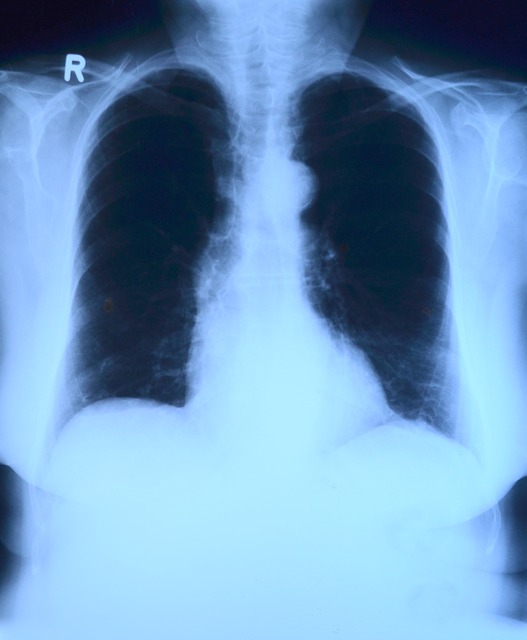Remember those old science fiction movies from the 50’s and 60’s where radiation would cause mutant giant ants or giant lobsters to grow in the city sewer system. Even worse, the old Japanese radiation caused mutant monster films? These films played on the frightening reality of the dangers of high-energy radiation. As time has gone by and the fear of “the bomb” has faded from the public’s attention so has the fear of radiation. Unfortunately the decrease of the fear has not decreased the danger of radiation. In the 50’s and 60’s no one would have touched a food exposed to radiation with a ten-foot pole yet today we merrily eat irradiated food by the plateful.
High-energy (ionizing) radiation kills and/or mutates living tissue. The human body has a small defense against ionizing radiation in the form of antioxidants. One of the damages caused by ionizing radiation is that it forms free radicals in the body which antioxidants are able to fight if you have enough of them. Radiation also breaks down the DNA in the cells and causes mutations to occur. Usually your body will attack these mutations just like the people in the old movies would attack the giant lobsters. But sometimes the mutations are too strong and they keep growing. This is what we call cancer. Radiation is one of the causes of cancer. We all know this because of all the cancers that show up around radiation hot spots like Three Mile Island, Chernobyl, and Hiroshima.
What is the most common source of radiation in our average daily lives? Answer: the sun. Medical doctors will warn you of the cancer causing effects of the sun – although the warnings they have given for the last 30 years were backwards. It turns out that the most dangerous sunrays are the early morning and late afternoon rays and the safest are the mid-day sun rays. It also turns out that the deadly melanoma skin cancers are actually reduced by exposure to mid-day sun because of the increased vitamin D formed in the skin that protects you from melanomas. It is only the non-deadly skin cancers that are kicked up by too much sun exposure from the early and later parts of the day (as well as sunburns). Ironically the whole sunscreen lotion industry has been found to actually increase these cancers by allowing you to stay out in the sun longer. The sunscreen keeps you from burning – mother natures way of telling you to get out of the sun because you are getting too much radiation exposure – but does not block out the cancer causing rays.
The second most common source of radiation in our lives is medical X-rays. I got an X-ray operator license as part of my Chiropractic license. The license is all about safety procedures for handling and working with X-ray radiation. X-rays are very dangerous. Always in the mind of the doctor must be the question of the benefit of finding out what an X-ray will show versus the damage caused by taking the x-ray. There is no “safe” level of radiation. Every bit of it damages tissue and causes mutations. “Safe” levels are really determined by what is called the LD-50 – Lethal Dose for 50% of those exposed. This is the same rational as used in determining the “safe” level of a drug. Since everyone is different, their resistance to radiation damage is different, so no one actually knows what “safe” is…so they guess. They pick an arbitrary number like 10% and say 10% of the LD-50 should be safe. Yeah, right…for some people maybe, but not everyone. That is why I rarely use X-rays in my practice. Although it takes much more time to find out what is going on through physical exam and muscle testing, I have no concern about damaging a person with radiation.
So now we come to the subject of this article, the use of X-rays for breast mammogram exams. Who thought up this insanity? X-rays cause genetic mutation and promote cancer. Why would you use a cancer causing procedure in order to look for cancer? They try to tell you it is safe, but there is no “safe” level of X-ray radiation. They justify it by saying that the damage is not as important as being able to discover cancer early enough to stop it. That might fly if it were true, but it isn’t. The fast growing invasive breast cancers are rarely caught with mammograms. You would have to have a mammogram every 6-8 weeks to catch the dangerous cancers. They appear and become a problem much too quickly to get caught by the mammogram until it is too late. Most cancers caught on a mammogram are the size of a dime and already contain over 4 billion cancer cells.
Modern oncology researchers are now saying that the best way to catch breast cancer early is through regular monthly self-breast exams. They have been saying this for many years now, however large scale studies have not shown any decrease in the death rate from breast cancer amongst women who do breast self exams. Shifting to something more like breast awareness of any changes in your breast tissue is likely a better route. You are the best person to know if there has been a change that does not feel right.
Is there something better? Yes there is – breast thermography. No X-rays are involved, no painful mammography machines. Thermography measures heat patterns caused by your blood flow and increased heat caused by inflammation. This shows abnormal physiology in tissue before obvious signs of cancer have showed up yet. It can point out changes that could lead to cancer before any cancer has even started. It is best to have your first thermogram done in your twenties to establish a baseline for what normal looks like for you. Here is an excellent website on thermography:
www.breastthermography.com/breast_thermography_mf.htm
http://www.breastthermography.com/find-a-center.htm
visit http://www.fairoakshealth.com”
